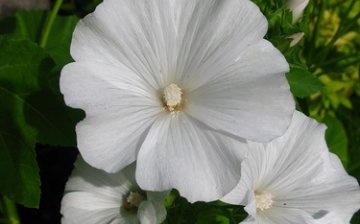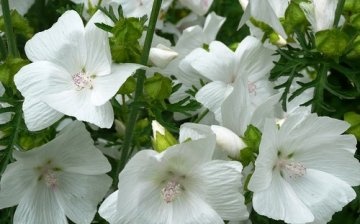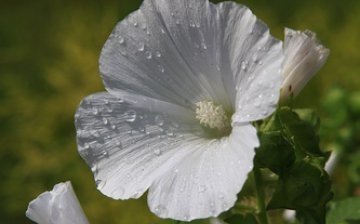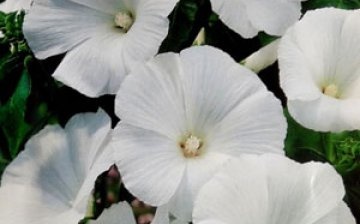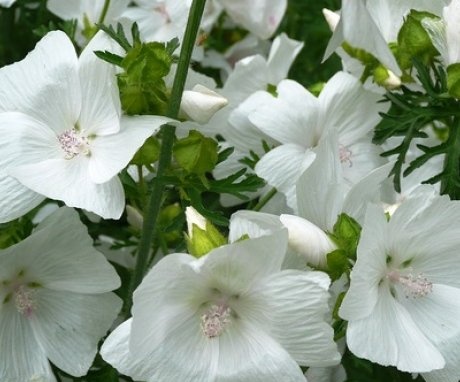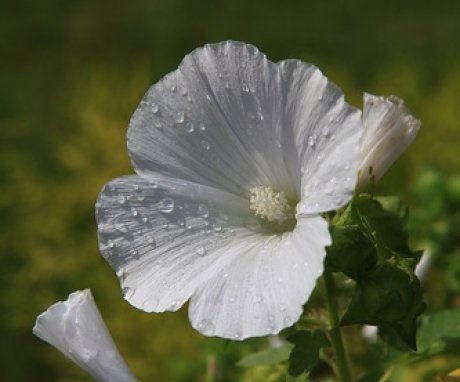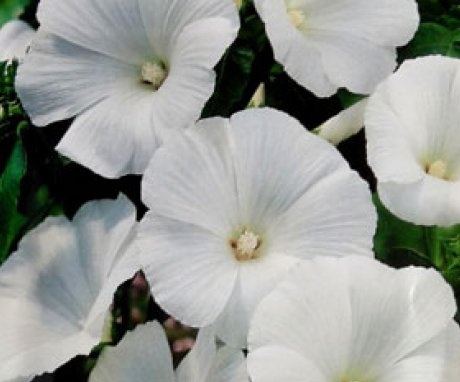Lavatera in the photo. Lavatera Bride
There is always a place in the garden where noble plants grow and bloom reluctantly. Some of them are very gentle and afraid of drafts, and some cannot stand a long stay in the hot daytime sun. So that such a place in your garden is not empty and overgrown with weeds, it is worth planting a lavender there. She is undemanding, loves abundant sunlight and blooms gorgeous from July to late autumn.
Content:
- What is good about the Lavatera Bride
- How can lavatera be propagated
- How to care for a lavender Bride
What is good about the Lavatera Bride
Lavatera is an absolutely unpretentious plant. It blooms violently and for a long time pleases with its beauty, even if sometimes they forget to water it. It is precisely its abundant and long-lasting flowering that attracts gardeners more and more. It is also drought-resistant and cold-resistant and grows flawlessly on any soil. This is a great option for decorating your garden.
Lavatera in the photo is the White Bride grade. There has long been a belief that if unmarried girls grow the Bride in their garden, they will surely marry a loved one soon.
Lavatera is a low-growing bushy plant up to 70 cm in height with lobed leaves and large funnel-shaped flowers. To make it look spectacular in a flower bed, it is planted in front of higher and brighter flowers, for example, gladioli, asters or dahlias... But the lavater looks no less decorative and elegant in a single planting and in mixborders. In any combination, she will always attract the attention of a person passing by.
Lavatera Bride loves sunny places in the garden, but also grows well in the shade. Only with a lack of sun can the plant stretch a little. But this does not spoil her magnificent and blooming appearance at all.
How can Lavatera be propagated
Lavater propagates by seeds, which are planted directly into the ground or seedlings. Ready-made lavater seeds can be purchased in specialized stores, or you can collect it yourself after the plants have faded.
Lavatera seeds ripen well even in rainy and cool summers. Seeds are harvested at a time when the bolls of the plant become dry and the seeds turn gray. It is not scary if the seeds wake up to the ground during collection. They will sprout together next year, and the lavater can be transplanted to the right place. This is not difficult to do, since the Lavatera tolerates the transplant completely painlessly.
Lavater seeds can be sown in the ground in early spring. Usually, seeds germinate quickly, and seedlings appear already on the 14th-17th day. But you need to be prepared for the fact that it will bloom no earlier than 60 days.
For earlier flowering, lavatera is sown on seedlings. Some gardeners plant grown seedlings in flower beds, and additionally sow seeds nearby. Plants will bloom at different times. So gardeners manage to extend the flowering period.
To grow seedlings of Lavater, it is necessary to sow seeds in a school (a special place for growing seedlings in the open field). This should be done around the end of April. The place with future seedlings is well covered with spunbond. Soon the seeds germinate, and the young seedlings are healthy and strong. From time to time, young shoots are watered. Plants are planted in the ground when the weather is already warm.
How to care for a lavender Bride
Although Lavatera grows in any soil, it prefers loose and less fertile soil. Under such conditions, the shoots do not stretch too much, and the flowering is massive and intense. If the soil is very poor and non-nutritious, you can feed the plant, but not more often than after 5-8 weeks. For feeding, use complex fertilizers containing compost and nitrogen-phosphorus components.
In order for the lavatera to bloom magnificently and not experience discomfort, you need to constantly cut off the faded inflorescences. This helps to stimulate the formation of new buds, and the outside of the plant will look more attractive.
Lavatera Bride reacts painfully to waterlogging, so watering it once a week is enough, even if the summer sun beats down mercilessly and other plants require life-giving moisture.
Sometimes lavatera can get sick and get stricken with rust. With this disease, brownish-yellow spots appear on the underside of the leaves. To save the plant, you need to cut off and destroy the affected leaves. If the whole plant is sick and there is no point in saving it, it is simply destroyed. It will not be possible to plant a lavender at this place for several years.
For the winter, Lavatera is left in the ground, it tolerates winter well even without additional shelter.
It rarely happens that with minimal plant care it turns out to grow such beauty. This is probably why the Lavater is loved so much grow our women. The plant rightfully deserves attention because of its unpretentiousness and generosity. A bouquet of cut shoots of the Bride's lavatera can be a wonderful decoration for a bedroom or living room.



